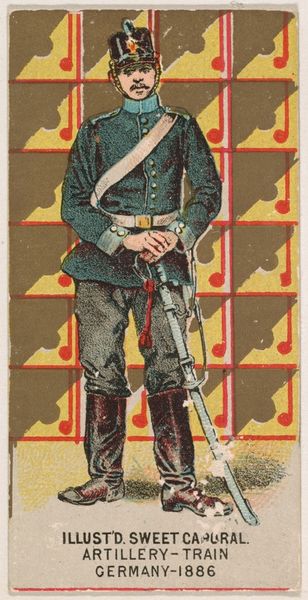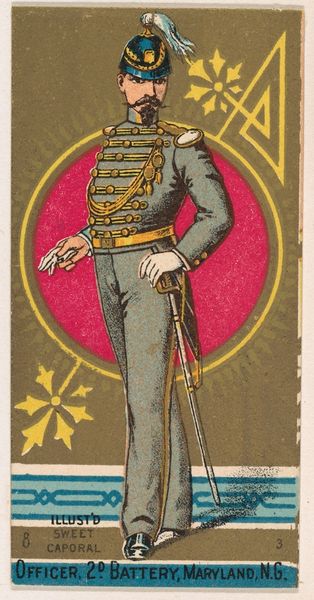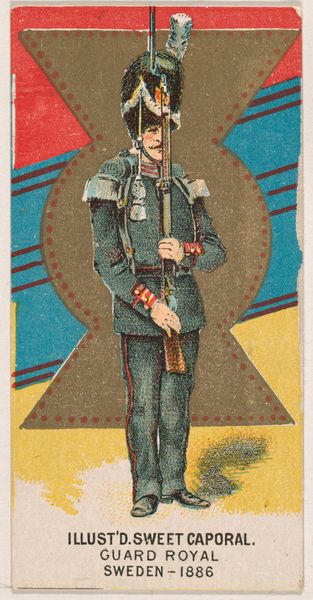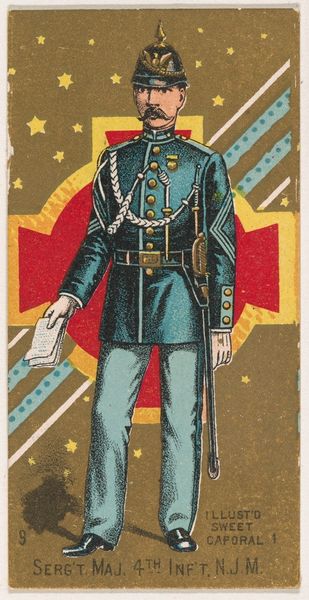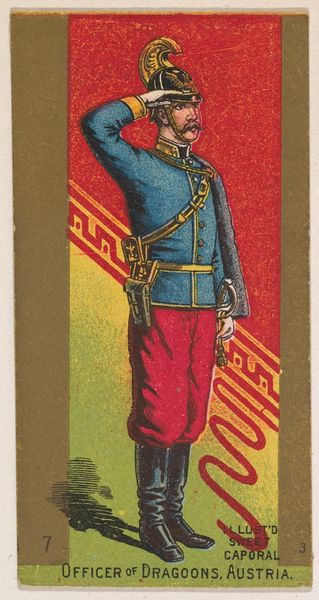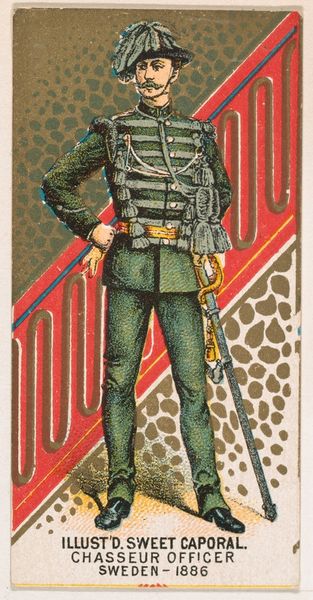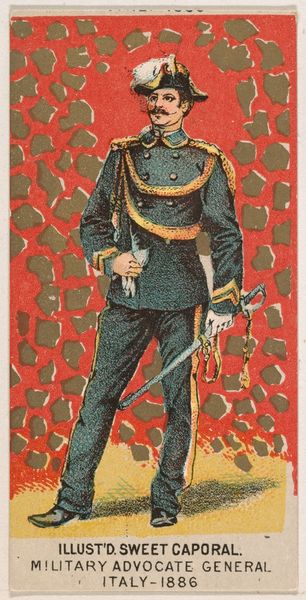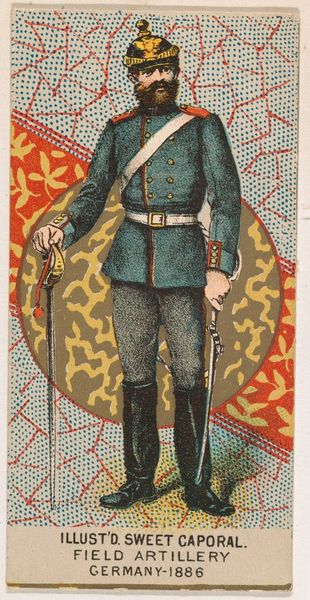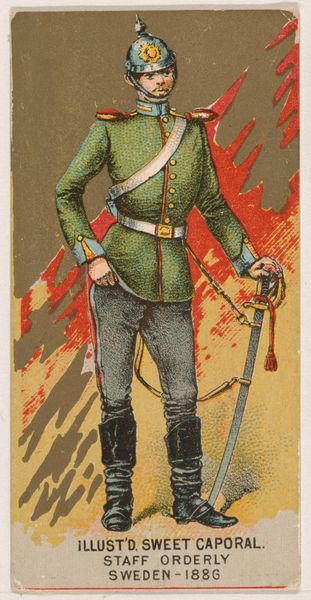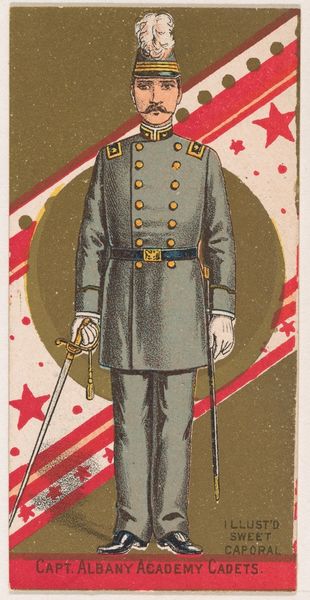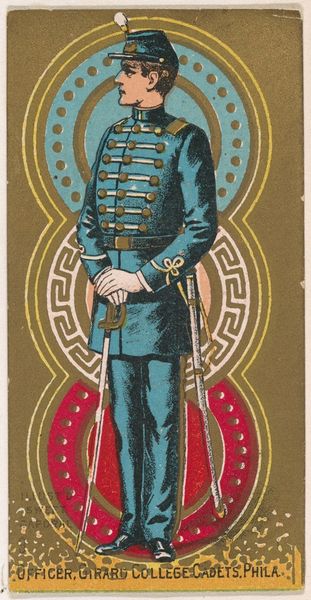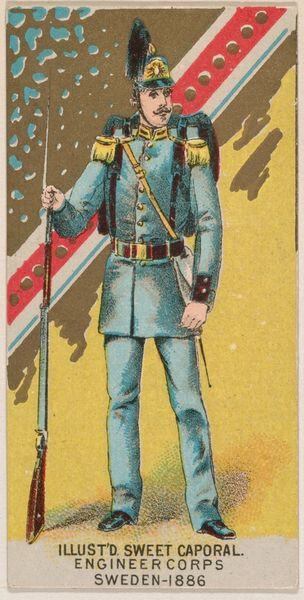
Crown Order of Wuertemberg, Germany, from the Military Series (N224) issued by Kinney Tobacco Company to promote Sweet Caporal Cigarettes 1888
0:00
0:00
drawing, graphic-art, print
#
drawing
#
graphic-art
# print
#
caricature
#
caricature
Dimensions: Sheet: 2 3/4 × 1 1/2 in. (7 × 3.8 cm)
Copyright: Public Domain
Editor: Here we have a promotional print from 1888 by Kinney Tobacco Company. It’s from their "Military Series" and it's called "Crown Order of Wuertemberg, Germany." It was an advertisement for Sweet Caporal Cigarettes. What's particularly interesting is the way the materials and manufacturing come together, what do you make of it? Curator: This is fascinating because it throws the traditional hierarchy of art on its head. Here we have an object produced en masse, a chromolithograph designed for widespread consumption to drive the sales of cigarettes. This piece exists solely as a tool of marketing, an effort to manufacture and commodify desire itself. How does its creation and distribution relate to ideas of labor and class, do you think? Editor: That's a really interesting point. So, the company likely employed numerous artists and laborers in a factory-like setting to produce these. Was it considered art or just commercial production at the time? Curator: Exactly. It challenges us to think about artistic labor. Was the individual who designed this considered an artist, or merely a cog in the machine of industrial production? How does this mass production influence ideas about craftsmanship and artistry itself? Think about the audience too—the consumer, who engages with art to promote the sale of tobacco and military might. Editor: So, it is sort of entwined with social dynamics... almost inseparable. How interesting. Curator: Absolutely. This print reminds us that art isn’t created in a vacuum. It reflects the power structures of its time, produced within specific economic and social contexts. That challenges the notion of art for art's sake. This piece exists solely to sell cigarettes. How can we consider traditional high art following these insights? Editor: This completely shifts my perspective on what to even consider as “art.” It's making me question everything I've learned so far! Curator: Exactly! The power of a materialist approach lies in revealing the social relations embedded within seemingly simple objects.
Comments
No comments
Be the first to comment and join the conversation on the ultimate creative platform.


